Friends of AHBIC
If you aren’t already a Friend of AHBIC, we welcome you to join our group of organisations and individuals who are supporting Australia’s national beekeeping industry that supports you.


If you aren’t already a Friend of AHBIC, we welcome you to join our group of organisations and individuals who are supporting Australia’s national beekeeping industry that supports you.
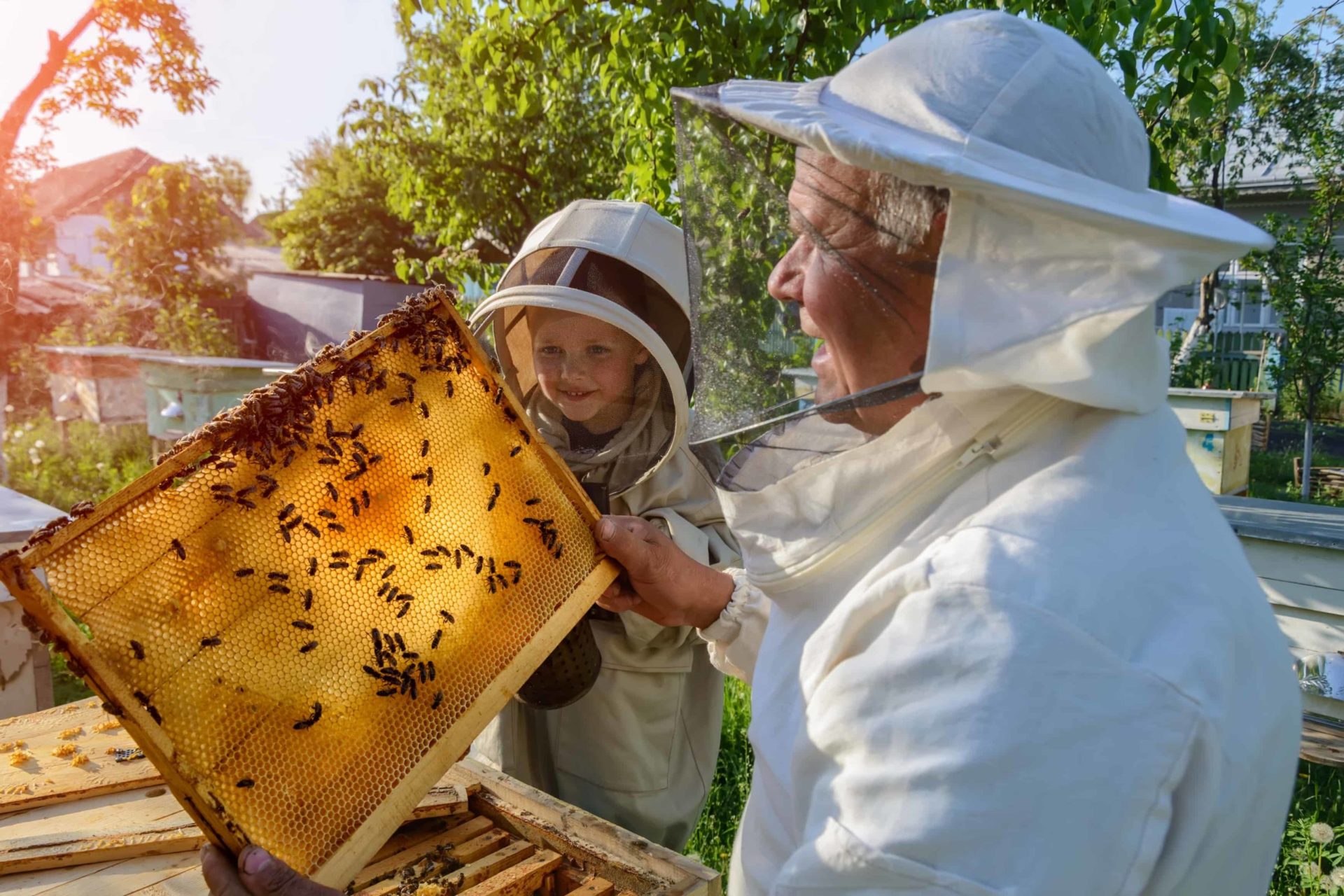
The specially designed app will assist in maintaining hive record information that satisfies the requirements of the National Biosecurity Code of Practice. The program is intended for small commercial and recreational beekeepers who sell honeybee products direct to:
The low annual fee includes the use of the hive management app and an annual desk audit.
For further information go to www.btrace.com.au


Varroa continues to dominate activities. AHBIC hosted a successful webinar on 11th May to inform industry of the response progress. This was well received with nearly 500 participants on line and further 2,500 views of the recording. Big thank you to Bianca Giggins and the DPI public information team for pulling it together.
April was Bee Pest Blitz month, an initiative of AHBIC and PHA to increase awareness of biosecurity and the importance of surveillance. Whilst rushed this year, the Bee Pest Blitz will continue into the future and will expand to include an update of the BeeAware website, videos and more awareness raising activities.
The federal budget was handed down in May with some unwelcomed surprises. In particular, the newly announced biosecurity protection levy. This decision blindsided all ag sectors with no discussion prior to the budget being handed down. The proposed additional levy (0.05 cents/kg honey) will contribute to the pre-border surveillance activities, things like sniffer dogs, border force activities and the other activities carried out by the commonwealth. AHBIC is still chasing details, but it looks like this new levy will be implemented in July 2024.
Low level detections continue to slowly increase the red zones. The first round of surveillance is nearly completed. As a result, it is anticipated the detections should slow as they move into the second round of surveillance.
Baiting appears to be working across the zones with early efficacy trials showing good results. The public perception of baiting has continued to create angst in the community with misinformation gaining traction among the ill-informed.
I travelled to Canberra to attend the CCEPP face to face workshop to work through the response plan. We heard from several presenters that took us on a deep dived on different aspects of the response. The CCEPP and NMG have the response plan V3 before them which if agreed to will carry the response through the 3 years to completion.
Jon Lockwood and I attended the forum in Sydney which was an opportunity to provide feedback to AgriFutures and also to learn the breadth of work AgriFutures is involved in. Tony Mahar, CEO, National Farmer Federation provided an update to the forum on their strategic focus and issues they are working on. Presenters from a coupe of key AgriFutures projects also presented. It was a valuable 2 days with many take away messages for us.
The conference season will see AHBIC representatives at each state conference over the coming months. I will be in attendance Plant Health Australia (PHA) AGM in Sydney with a number of associated meetings around the AGM. I will also be attending a workshop in Dubbo “Agriculture Sector Diesel Transition Forum”.
We also have meetings with the Federal Department of Ag to discuss imported honey, non-prescribed goods export and skills training.
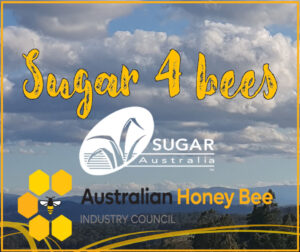
AHBIC in partnership with Sugar Australia have launched the Sugar 4 bees program to assist beekeepers affected by the Emergency Response.
The first collection of Sugar 4 Bees took place in May, a second was completed in early August, we supplied sugar dust to several beekeepers with the help of the NSW DPI at Somersby.
Mid August with the generous assistance of Ecrotek in Blayney,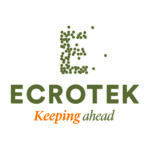 additional dust was supplied to beekeepers in the Gumble Purple zone. There are still numerous bags available for Gumble Beekeepers, please complete the form below to secure your collection, we will be in touch to finalise with you.
additional dust was supplied to beekeepers in the Gumble Purple zone. There are still numerous bags available for Gumble Beekeepers, please complete the form below to secure your collection, we will be in touch to finalise with you.
Bianca Giggins is coordinating so if you are interested in registering for a collection, please complete the form below.
The sugar dust will be in 1 tonne bulka bags. If beekeepers cannot safely accept 1 tonne bags, arrangements will need to be made for smaller sized collection.
The dust is available to assist beekeepers maintain hive health whilst impacted by the current Varroa incursion. The sugar dust attracts moisture and will go solid if not used quickly.
CLICK HERE to secure a collection.
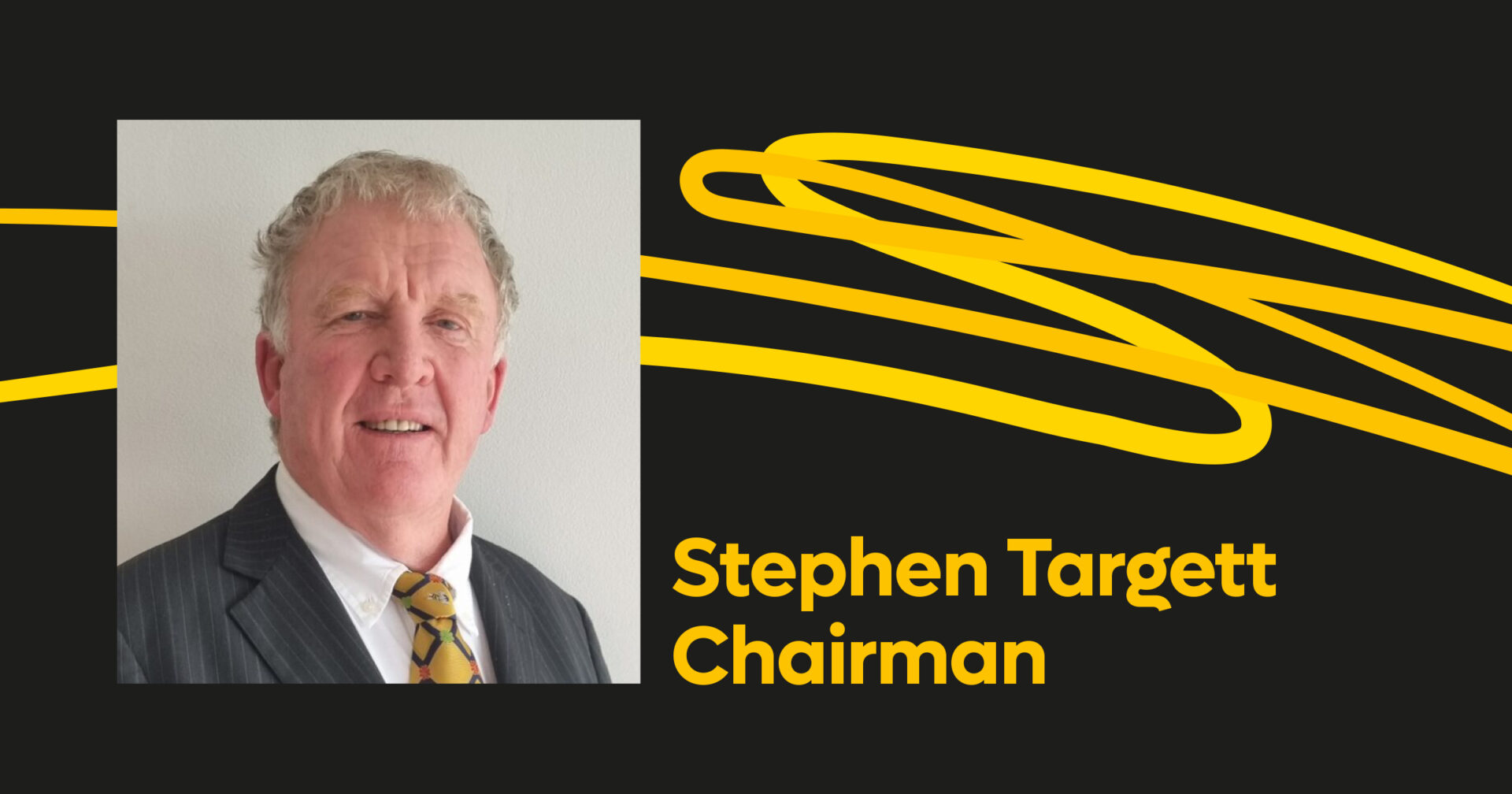
The AHBIC team has dedicated a lot of time to the Varroa response. We have been attending the daily IMT briefings and participated in workshops and meetings. Beekeepers that are affected and have questions or concerns please ring our Varroa Coordinator Bianca Giggins 0402 467 780.
AHBIC has signed the Memorandum of Understanding (MoU) with Plant Health Australia (PHA) on which describes AHBIC’s relationships with PHA and how the National Bee Pest Surveillance Program (NSPSP) and the National Bee Biosecurity Program (NBBSP) are managed. AHBIC, through the MoU is the industry representative overseas our biosecurity and surveillance programs.
AHBIC chaired the National Bee Biosecurity meeting recently. The main item out of this is that PHA are looking at a more sustainable funding model for the BSPSP and NBBSP, not just for the bee industry but other levied industries as well.
Congratulations to Lindsay Calloway who was selected to go on the Agrifutures Immersion Tour of the USA. This will be a great opportunity for networking and seeing large scale businesses operate. I am sure that Lindsay will see equipment/technology that can be used or adapted for use in Australia. Lindsay will be providing a report on his return.
An AHBIC members meeting was held. One item that created confusion was over member body membership fees. This will be included as an agenda item at the AHBIC AGM.
Friends of AHBIC (FOA) – very important friends as they fund our activities. AHBIC is in the process of automating the FOA system to ensure more timely reminders and to reduce the administration burden. Now is a GREAT time to become a FOA as donations are tax deductible for eligible beekeepers. A HUGE thanks to current FOA as your kind contributions allow us to represent our industry across a broad range of issues and platforms. Without your contributions AHBIC could not exist as we are not funded through levies and rely on the FOA system to survive.
The Congress committee had their final meeting recently. This was a sad occasion as the team had formed a very good bond. Thank you to all who had input to Congress and made it the success that it was. A job well done.
I sat on the candidate selection panel for the three vacancies on the Agrifutures Honey Bee and Pollination Advisory panel. Dianna Leemon had to step down as she had served two terms, and Neil Bingley and Rob Manning’s positions were vacated but they are eligible to re-nominate if they wished. Agrifutures will advertise the results shortly. Some very worthy candidates applied.
Stephen Targett
Chair
Tasmanian beekeepers are urged to keep up to date on the Small Hive Beetle Incursion in Devonport.
The incursion at this stage is under control by Biosecurity Tasmania, check out the latest details:
As a precautionary measure to help protect Tasmania’s bee population and both the honey and pollination
sectors, Tasmania’s Chief Plant Protection Officer declared a General Biosecurity
Direction, which establishes a 10km Bee Movement Restriction Area (Restriction Area) around the
detection site, and restricts the movement of bees, bee products and used beekeeping equipment within, into and out of the zone.
If you see anything suspect when harvesting honey or wax, please report it to Biosecurity Tasmania on 6165 3777.
All beekeepers within the Bee Movement Restriction Area are asked to avoid opening beehives during this period.
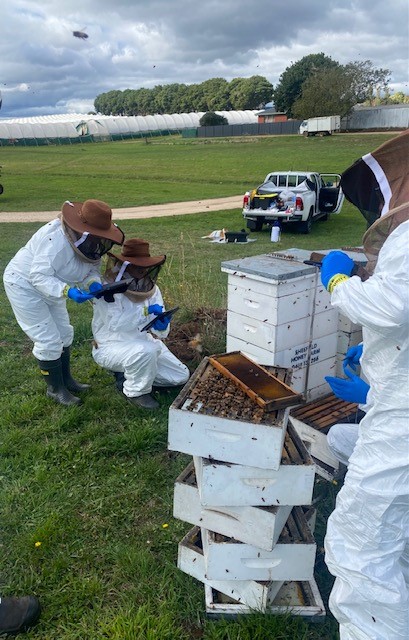

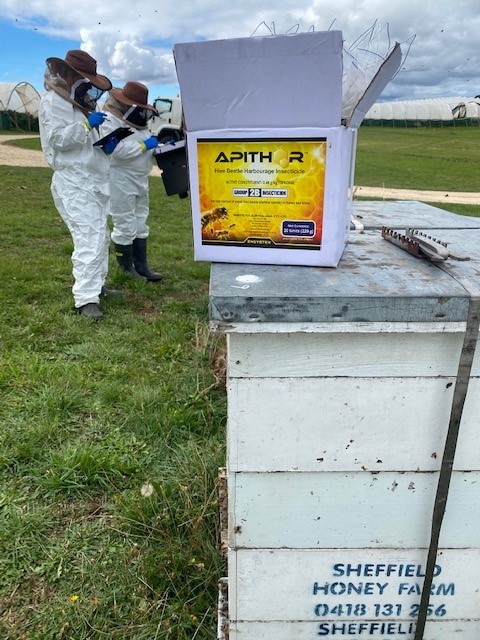
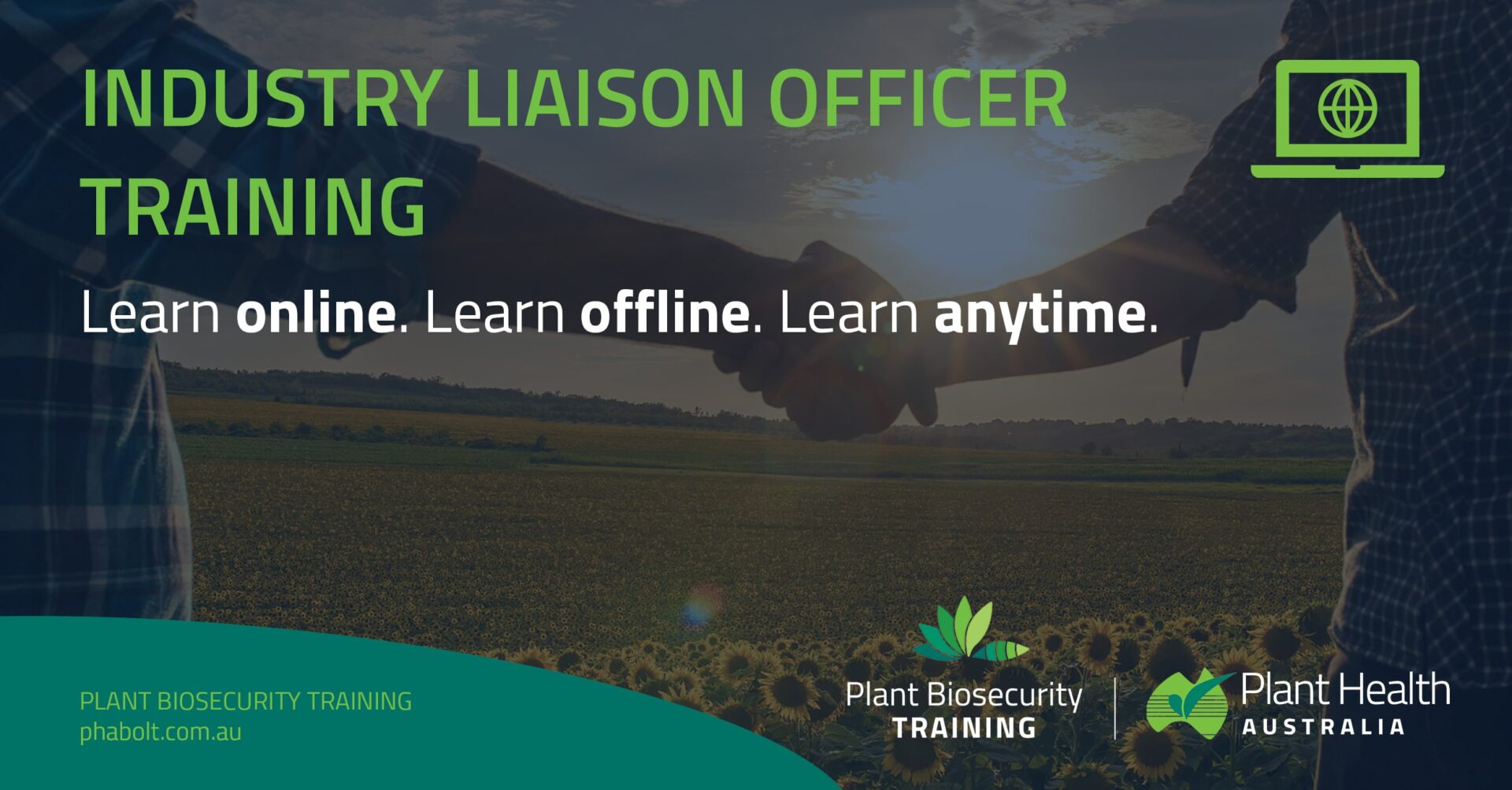
Plant Health Australia (PHA) recently launched a new e-learning Industry Liaison Officer (ILO) program consisting of an online ILO course and face-to-face ILO workshop.
The program is designed to improve response readiness of industry representatives that may be called on to work in the incident management structure during a response, and to understand their roles and responsibilities. ILOs contribute to decision-making by providing the affected industry’s perspective on aspects of the operational response. Their experience and knowledge of their respective industries allow them to provide advice on potential impacts of response strategies and actions. ILOs are also important links to support industry communication and engagement during response activities.
The enhanced program offers a new ILO e-learning course and redesigned training workshop to provide greater in-depth knowledge and the opportunity to develop skills needed for undertaking an industry liaison role during a plant biosecurity response.
The enhanced e-learning course, hosted on PHA’s Biosecurity Online Training platform (BOLT) is a prerequisite to the workshop but also acts as just-in-time and refresher training. The course covers foundational knowledge needed to understand an ILO’s position and reporting obligations within an incident management structure.
The workshop is delivered in collaboration with the state or territory government where it is being held and includes training on the role and responsibilities of response functional areas, such as Public Information, Planning, and the Incident Controller. This provides participants with an understanding of the situations they would face as an ILO during a response and what their own roles and responsibilities would be. The training also provides an opportunity to foster partnerships between industries and government.
“The workshop explores realistic tasks that an ILO would perform during a response and their required responsibilities,” said Dr Driessen.
Over the next two years, one-day ILO workshops will be held in each state and territory.
If you are interested in the ILO role and attending a workshop, discuss it with your peak industry body and submit an Expression of Interest to training@phau.com.au.
The next ILO workshop is scheduled for 25 May 2023 in Tasmania. Visit our BOLT platform for more information.
Amanda Yong
National Manager, Marketing and Manager
0427 000 210
ayong@phau.com.au
Dave Schlipalius, Bee Biosecurity Officer, Biosecurity Queensland, Queensland Department of Agriculture and Fisheries.
No one knows bees better than beekeepers. This makes beekeepers the perfect eyes and ears for detecting exotic bees. Exotic bees pose a biosecurity risk, as they would compete for resources with Australian native bees and European honey bees, as well as potentially bringing a range of pests and diseases which could affect our bees.
Beekeepers and bee enthusiasts alike play an important role in the early detection of exotic bee species, by knowing what the key exotic species look like and reporting any suspicious bees.
There are five exotic bee species that are of major biosecurity concern to Australia and a couple of subspecies that cause problems for beekeepers. On first glance these bees can look a lot like European honey bees but there are differences if you know what to look for. Key features of European honey bees and exotic bee species are outlined below.

European honey bees can be quite variable in appearance depending on their genetic backgrounds. This can make it difficult to identify closely related bees.
Asian honey bee is the most likely exotic bee species that could be encountered in Australia. While Asian honey bee has established in parts of North Queensland, it is still considered exotic and reportable elsewhere in Australia. Asian honey bees can carry exotic mite species so it is important to report them when found outside the known infested area. Their swarming behaviour means they are more likely to be found on cargo or vehicles moving longer distances.
Size: Asian honey bees are smaller than European honey bees, coming in at 10 mm long while European honey bees are usually about 13-16 mm long.
Appearance: Asian honey bees have evenly spaced, distinct yellow and black bands on their abdomen, while the bands on European honey bees tend to be variable in size, less regular and often with indistinct edges. Asian honey bees are also less hairy than European honey bees.
Behaviour: Swarms of Asian honey bees have fewer bees and they swarm more frequently than European honey bees. Asian honey bees tend to sting less.
 Cape honey bees look very similar to European honey bees because they are very closely related. The main differences between Cape honey bees and European honey bees are behavioural. This can make them difficult to detect in European honey bee hives. One of the distinctive characteristics of Cape honey bees is the ability of worker bees to lay worker eggs without mating, enabling these workers to turn into pseudo-queens, this helps them move into established hives of European honey bees and slowly take them over. The egg-laying workers do not forage as much, and this reduces the host hive’s productivity and often weakens the hive until the original queen dies. Once the original queen dies, Cape honey bees then move on to infest another hive. This phenomenon is described as ‘social parasitism’.
Cape honey bees look very similar to European honey bees because they are very closely related. The main differences between Cape honey bees and European honey bees are behavioural. This can make them difficult to detect in European honey bee hives. One of the distinctive characteristics of Cape honey bees is the ability of worker bees to lay worker eggs without mating, enabling these workers to turn into pseudo-queens, this helps them move into established hives of European honey bees and slowly take them over. The egg-laying workers do not forage as much, and this reduces the host hive’s productivity and often weakens the hive until the original queen dies. Once the original queen dies, Cape honey bees then move on to infest another hive. This phenomenon is described as ‘social parasitism’.
Size: Similar in size, but often reported as slightly smaller than European honey bees.
Appearance: Very similar to European honey bees.
Behaviour: While Cape honey bees are more docile than European honey bees they are also more flighty when a nest is approached; ability of worker bees to lay eggs and social parasitism.
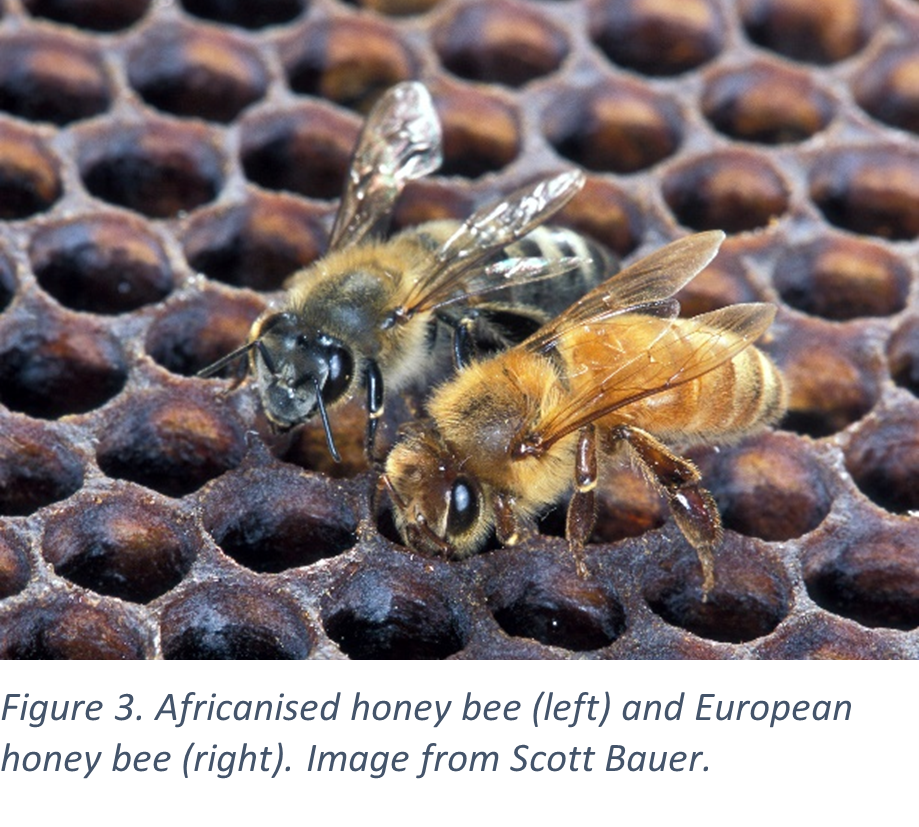 While Africanised honey bees are generally smaller than other European honey bees, they are difficult to distinguish based on their physical appearance alone. The key difference is their extremely high tendency for stinging when disturbed. Once alerted, swarms of Africanised honey bee can be difficult to escape and they continue stinging intruders for hundreds of metres away from their hive.
While Africanised honey bees are generally smaller than other European honey bees, they are difficult to distinguish based on their physical appearance alone. The key difference is their extremely high tendency for stinging when disturbed. Once alerted, swarms of Africanised honey bee can be difficult to escape and they continue stinging intruders for hundreds of metres away from their hive.
While it is unlikely that Africanised honey bees would arrive in Australia unnoticed, their propensity for swarming means they are capable of hitchhiking in shipping containers. Any bee swarms that have extreme stinging behaviour should be reported, as they could be Africanised bees.
Size: Smaller than European honey bees, but larger than Asian honey bees. Usually about 12 mm long.
Appearance: Similar to European honey bees.
Behaviour: Extreme stinging behaviour and high frequency of swarming.
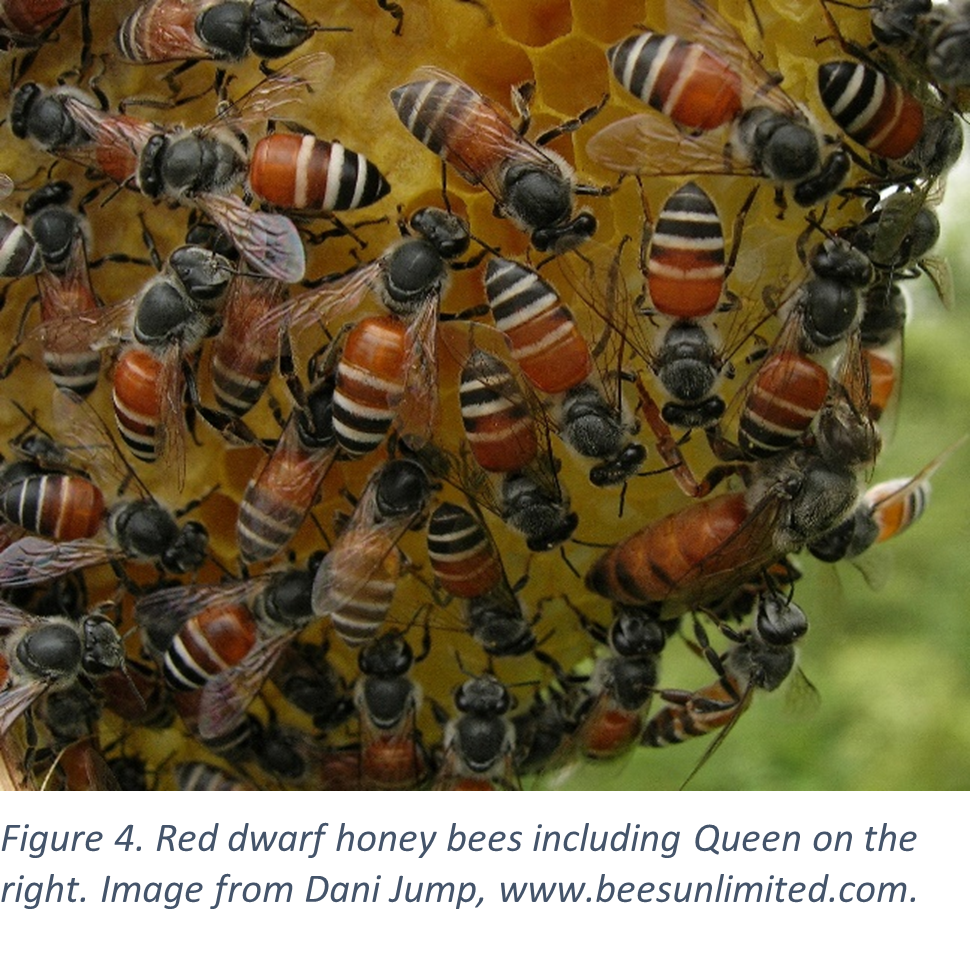
Dwarf honey bees are natural hosts to exotic Euvarroa mites (a close relative of Varroa mites) and Tropilaelaps mites, which are also exotic bee pests of concern to Australia. Dwarf honey bee species also swarm much more often than European honey bees, and can sometimes be found on cargo, shipping containers or ships.
Size: Much smaller than European honey bees, usually 7-10 mm long.
Appearance: A. florea (red dwarf honey bee) has a distinct reddish stripe on its abdomen, A. andreformis (black dwarf honey bee) has much darker patterning in general with a dark abdomen and thin light bands on top. Both species are more slender than European honey bees.
Behaviour: Dwarf honey bees (both species) are less defensive than other honey bees and so will sting less. They have small colonies of only a few thousand bees and nests with one comb, usually less than 25 cm across, built around tree branches.
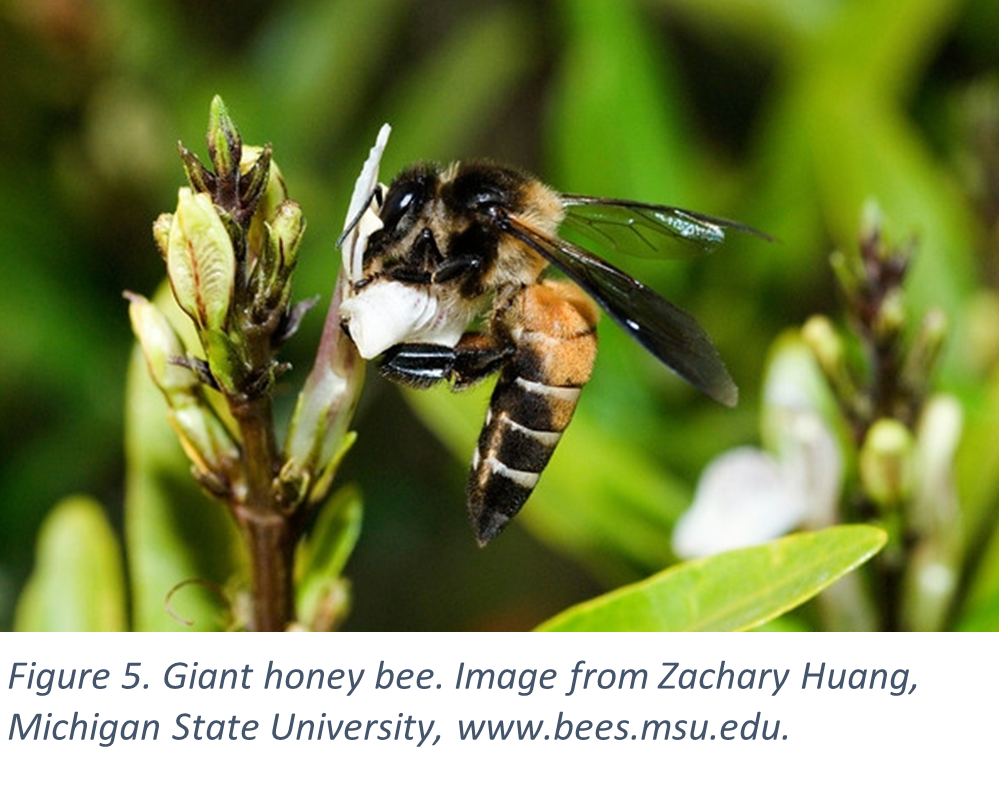
Giant honey bees are also a natural host to exotic Tropilaelaps mites that can threaten the health of European honey bee colonies. Giant honey bees are very large compared to European honey bees although they have similar colouring. Swarming and stinging more readily than European honey bees, giant honey bees build open, single comb nests often suspended in trees.
Size: Giant honey bee workers are often 17-20 mm, but can grow to 30 mm in length, almost twice the size of European honey bees.
Appearance: Workers have colours similar to European honey bees with golden, black and pale bands on the abdomen, usually with larger golden bands.
Behaviour: Giant honey bees swarm and sting quite readily and have open single-comb nests that are suspended from above, often from sturdy tree branches.
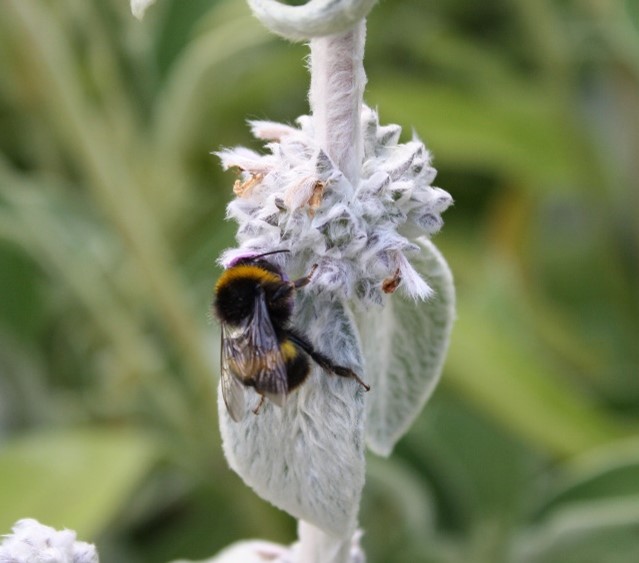
Large earth bumblebees (aka bumblebees) have established in Tasmania, but they are not known to be present in other parts of Australia. So, for most states of Australia they are a notifiable species. The impact of exotic bumblebees to other Australian native ecosystems is unclear but could be serious. Some large native bees (like carpenter bees) are often mistaken for bumblebees at first glance, but closer inspection reveals differences in hairiness and colouring. Compared to European honey bees, bumblebees have ‘sturdier’ broader bodies with a hairy thorax.
Size: Bumblebees are generally large, with workers up to 17 mm.
Appearance: Bumblebees are hairy with broad dark yellow bands on their thorax and abdomen. In contrast, native carpenter bees are usually uniform in colouring, with a hairy golden thorax and dark abdomen.
Behaviour: Bumblebees are social bees that generally nest underground in hollows. Carpenter bees are solitary and nest in small cavities often carved out of branches.
Monitoring and action
If you come across a bee that you think may be exotic, and if you can safely catch the bee, do so and store it in a sealable container. Once the bee is contained, try to take some images you can send for identification. Images should be in focus, and from a range of different angles. Next, take some notes about where the bee was, what it was foraging on, behaviour (temperament) and any other distinctive features. If you cannot catch the bee, also record aspects of the bee’s appearance (size, patterning, and colouring) and what direction it left in, as soon as possible (so you remember more clearly). Then call the exotic plant pest hotline on 1800 084 881 and report it.
Author: Dave Schlipalius, Bee Biosecurity Officer, Biosecurity Queensland, Queensland Department of Agriculture and Fisheries.

The Queensland Department of Agriculture and Fisheries delivers the Queensland component of the National Bee Biosecurity Program (NBBP). The NBBP is coordinated by Plant Health Australia and funded by the Australian honey bee industry Levy with in-kind contributions from state and territory governments.

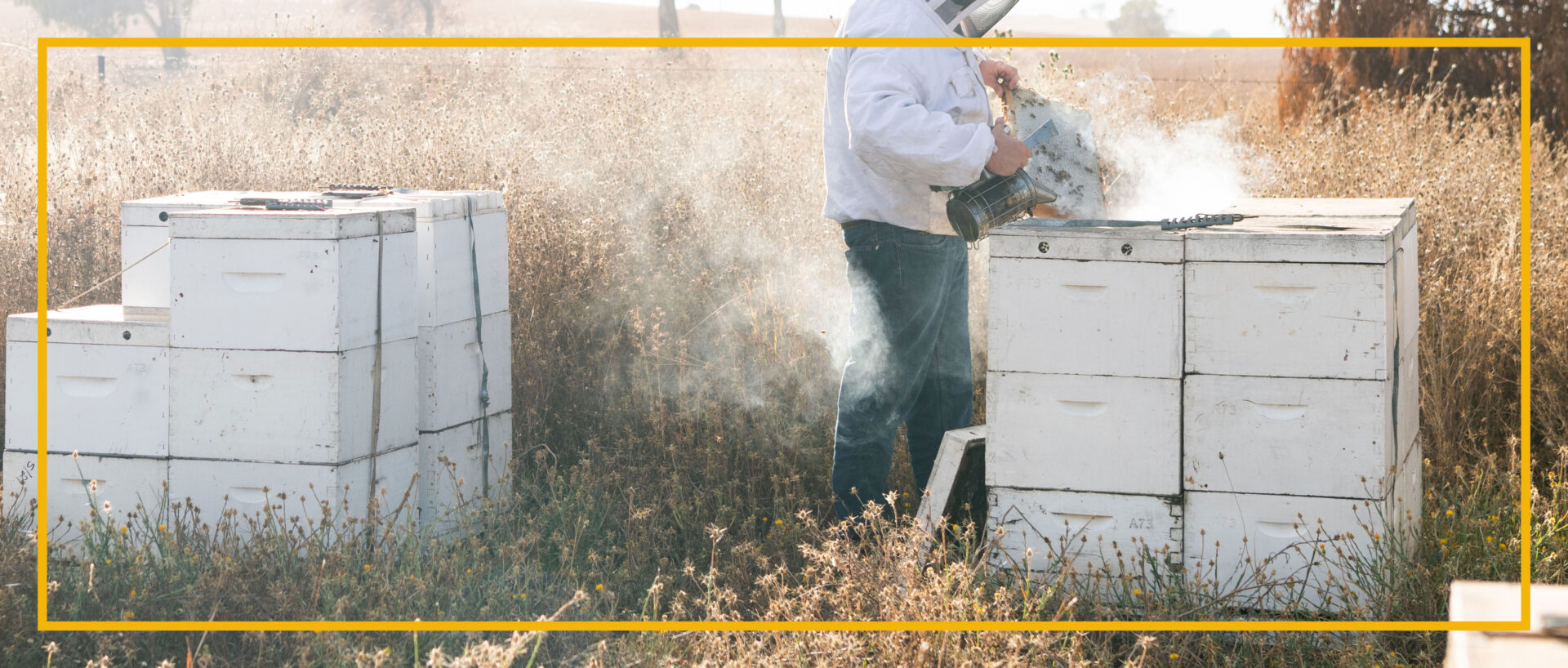
Industry Briefing : Webinar
AHBIC coordinated with the NSW DPI to arrange an Industry Briefing free online Webinar.
The webinar held on 11th May 2023 provided a valuable update of the response details, the current activities and shared some of the data with industry, followed by a Q & A Session.
Re visit the webinar by watching the recording here from YouTube

B-QUAL is an Industry Owned Quality Assurance System for Australian beekeepers.
How does B-QUAL certification benefit my business?
B-QUAL Certification also enables an enterprise to market its product under the B-QUAL logo to show that it meets the B-QUAL Industry Standards.
Complete your training at home at your own pace.
For more information and to obtain a Certification Information Pack, contact the B-QUAL Certification team.
www.bqual.com.au
B-QUAL Pty Ltd
Phone 07 49949820
Email: admin@bqual.com.au
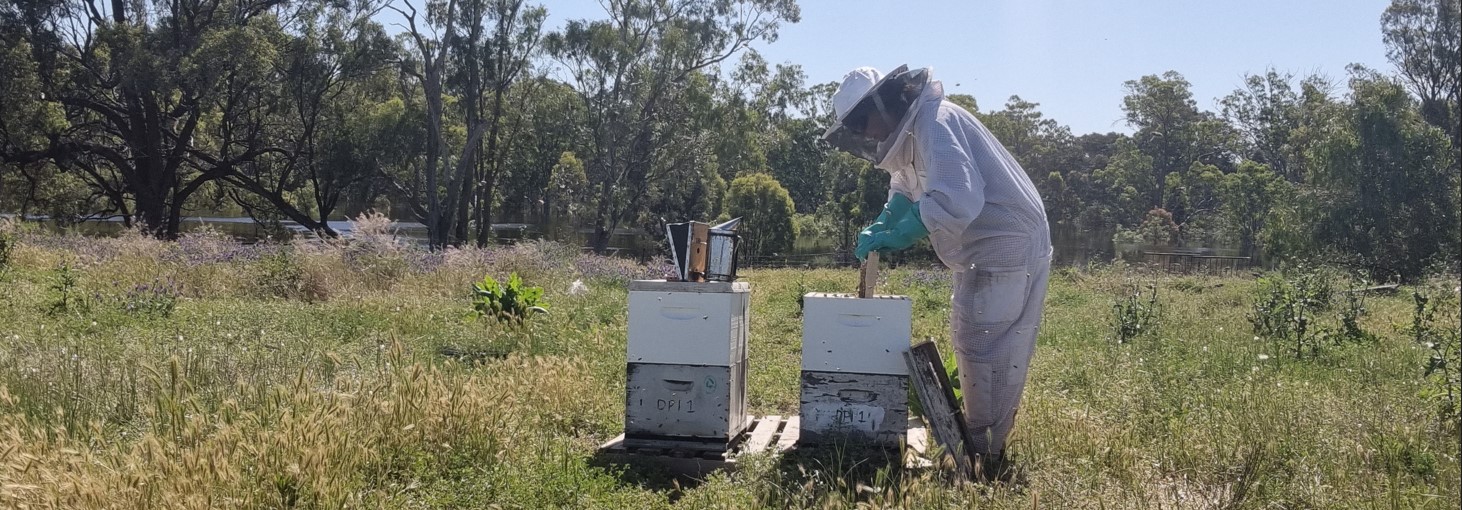
Image: Agriculture Victoria conducting surveillance on sentinel hives along NSW border.
Following extensive tracing and surveillance activities by NSW DPI, the consultative committee for the national varroa eradication response continues to accept the NSW general emergency zone (GEZ) or ‘blue zone’ (see map) as being free of Varroa destructor.
The national decision was made on the basis that surveillance data provides 99.99 per cent confidence that varroa mite is not present in this area. Victoria is supportive of this decision and will now assess permit applications to move interstate registered hives, that have been continuously located more than 25 km from an infected premise, into Victoria. All movement requests will be subject to strict permit conditions and active compliance checks, coupled with testing, training and traceability requirements.
Please note that Victoria’s testing requirements are independent of the NSW Biosecurity Order’s alcohol wash requirements, so please double check Victorian permit conditions. Permits will not be granted for queens, escorts, and queen cells from New South Wales at this time.
For more detailed eligibility criteria, information, and applications, visit the permit application page on the Agriculture Victoria website.
Varroa mite is a notifiable exotic disease of bees under the Livestock Disease Control Act 1994. Report any suspect Varroa mite or any other exotic pest or disease immediately to the national Exotic Plant Pest Hotline on 1800 084 881. In Victoria this hotline is staffed 8 am to 6 pm Monday to Friday and 10 am to 6 pm on weekends and public holidays – please leave a message outside these hours.
This information is kindly provided by:
Honey Bee Biosecurity team
Department of Energy, Environment and Climate Action Victoria, Australia
| National Council of Crop Pollination Associations | 16 May, – Penrith, NSW |
| New South Wales Apiarists Association | 18th-19th May – Penrith, NSW |
| Tasmanian Beekeepers Association | 26th-27th May – Hobart, TAS |
| Queensland Beekeepers Association | 15th-16th June – Toowoomba, QLD |
| South Australian Apiarists Association | 22nd-23rd June |
| Victorian Apiarists Association | 6th-7th July – Bendigo, VIC |
| Australian Honey Bee Industry Council – AGM | 8th July – Bendigo, VIC |
| Honey Packers and Marketers Association | TBA |
| Australian Queen Bee Breeders Association | TBA |
| Bee Industry Council of WA | Cancelled |

9:00am Saturday 8th July 2023
Fernery Room
All Seasons Resort
171-183 McIvor Hwy
Bendigo VIC 3550
This AGM there are 3 vacant positions including:-
Excerpt from the AHBIC constitution:-
7.6 To be eligible for nomination to the Executive, a person:
7.6.1 must be a member or a member of an Industry Organisation that is a member: and
7.6.2 shall have been a member or a member of an Industry Organisation that is a member for at least two consecutive years immediately prior to nomination; and
7.6.3 must be a full voluntary contributor to the AHBIC.
Observers are welcomed to attended the AHBIC AGM. Observers must register before Friday 30th June 2023 and pay $40 to cover catering.